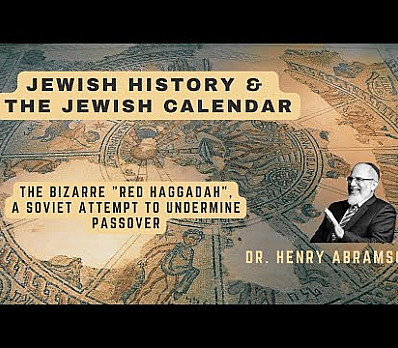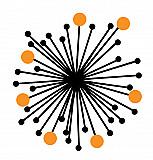{
"clip_details": {
"clip": {
"is_admin": 0,
"is_owner": 0,
"handle": "next-year-40",
"title": "Next Year...",
"author": "Maggie Berkowitz",
"author_handle": "maggie-berkowitz",
"author_initials": "MB",
"covertext": "לְשָׁנָה הַבָּאָה בִּירוּשָׁלָֽיִם L’shana haba-ah biy’rushalayim NEXT YEAR IN JERUSALEM!",
"user_image": "https://assets.haggadot.com/users/115851/conversions/profile10100285620645972-thumb.jpg",
"user_image_original": "https://assets.haggadot.com/users/115851/profile10100285620645972",
"body": "<p><strong>לְשָׁנָה הַבָּאָה בִּירוּשָׁלָֽיִם</strong></p>\n\n<p><em>L’shana haba-ah biy’rushalayim</em></p>\n\n<p>NEXT YEAR IN JERUSALEM!</p>\n",
"cliptype": "image",
"clipsource": "",
"featured": 0,
"featuredIn": null,
"is_public": 1,
"is_published": 1,
"media": {
"image": "https://assets.haggadot.com/clips/152666/3_1_1.jpg",
"audio": null,
"video": null
},
"thumbnail": "https://assets.haggadot.com/clips/152666/conversions/3_1_1-cover.jpg",
"clip_section": [
{
"haggadah_section": "Nirtzah",
"slug": "nirtzah"
}
],
"likes": 0,
"downloads": 212,
"tags": [],
"themes": [],
"language": "0",
"is_bookmarked": "0",
"is_liked": 0,
"meta_tags": {
"title": "Next Year... | Passover haggadah by Maggie Berkowitz",
"description": "Our simple platform allows you to create a custom Passover Haggadah, with access to unique content contributed by our community. Find artwork, family",
"keywords": "",
"og:type": "article",
"og:url": "https://www.haggadot.com/clip/next-year-40",
"og:title": "Next Year... | Passover haggadah by Maggie Berkowitz",
"og:description": "Our simple platform allows you to create a custom Passover Haggadah, with access to unique content contributed by our community. Find artwork, family",
"og:image": "https://assets.haggadot.com/clips/152666/conversions/3_1_1-cover.jpg"
}
}
},
"contributed_by": {
"author": "Maggie Berkowitz",
"handle": "maggie-berkowitz",
"author_initials": "MB",
"total_books": 1,
"total_clips": 10,
"total_followers": 0,
"is_following": 0
},
"user_book": null,
"clips_by_author": [
{
"clip": {
"is_admin": 0,
"is_owner": 0,
"handle": "pride-empathy-and-cry-compassion",
"title": "Pride, Empathy, and a Cry for Compassion",
"author": "Maggie Berkowitz",
"author_handle": "maggie-berkowitz",
"author_initials": "MB",
"covertext": "Artwork: Nicole Eisenman, Seder, 2010. Oil on canvas. The Jewish Museum, New York. Purchase: Lore Ross Bequest; Milton a...",
"user_image": "https://assets.haggadot.com/users/115851/conversions/profile10100285620645972-thumb.jpg",
"user_image_original": "https://assets.haggadot.com/users/115851/profile10100285620645972",
"body": "<p>Artwork: Nicole Eisenman, Seder, 2010. Oil on canvas. The Jewish Museum, New York. Purchase: Lore Ross Bequest; Milton and Miriam Handler Endowment Fund; and Fine Arts Acquisitions Committee Fund</p>\n\n<p>The gay and Jewish people both have histories filled with violence and discrimination. It is only natural that the feeling of empathy — the ability to share and understand the suffering of others — plays a large role in both communities. Empathy is the ultimate remuneration from persecution.</p>\n\n<p>The Jewish people have a long history of empathizing with others and fighting for social justice. I believe this tradition of empathy is in part a result of Passover, the Jewish holiday that commemorates the Israelites’ redemption from slavery in Egypt, as told in the Book of Exodus. The Passover seder, as depicted by artist <a href=\"http://thejewishmuseum.org/collection/33792-seder\">Nicole Eisenman</a>, is an annual reminder to the Jewish People about our roots as slaves.</p>\n\n<p>Anyone who has attended a Passover seder may be familiar with the excitement, boredom, exhaustion, hunger and intensity that Eisenman portrays on the faces of her guests. <a href=\"http://thejewishmuseum.org/collection/33792-seder\"><em>Seder</em></a> is seen from the perspective of the seder leader, who directs the evening’s rituals as the Exodus story is retold.</p>\n\n<p>This year I had the pleasure of leading my first seder with my dear friend the artist <a href=\"https://www.instagram.com/p/BT2qdEHFAGJ/?taken-by=thejewishmuseum\">Chloe Wise</a> at Jeffrey Deitch Gallery. I explained to our guests that Passover is a holiday entirely about empathy. The Torah says in Exodus 23:9</p>\n\n<p><em>“You shall not oppress a stranger; you know the heart of an alien, for you were aliens in the land of Egypt.”</em></p>\n\n<p>Holocaust survivor, writer, and my role model Elie Wiesel said it best:</p>\n\n<p><em>“I love Passover because for me it is a cry against indifference, a cry for compassion.”</em></p>\n\n<p><em>After surviving Auschwitz concentration camp, Wiesel became writer, professor, activist, humanitarian, and Nobel Laureate. He has been called “a messenger to mankind,” “a grandson of the Jewish People,” and notably by President Barack Obama, “the conscience of the world.” Elie Wiesel was also a lifelong advocate for gay rights. In 1989, he was honored by The Human Rights Campaign, and said to the crowd:</em></p>\n\n<p><em>“Those who hate you, hate me…Bigots do not stop at classes, at races, or at lesbians and gays. Those who hate, hate everybody.”</em></p>\n\n<p><em>I was recently asked, “Why are you marching in a Pride parade if gay people now have the same rights as straight people?” I explained that even though gay marriage is now legal in the United States, LGBTQIAA (Lesbian, Gay, Bisexual, Transgender, Queer, Intersex, Asexual, Ally) communities are still marginalized. The majority do not have the same rights as gay men; queer people, particularly trans and gender-nonconforming people of color, continue to suffer greatly in America. Abroad, a majority of LGBTQ people are not safe in their countries. I march because gay men are being put into concentration camps in Chechnya. I march because 17 trans women have been murdered in America already this year. I march because my ancestors were once slaves in Egypt.</em></p>\n\n<p><em>-Adam Eli, Guest Contributor for The Jewish Museum</em></p>\n\n\n",
"cliptype": "image",
"clipsource": "The Jewish Museum",
"featured": 0,
"featuredIn": null,
"is_public": 1,
"is_published": 1,
"media": {
"image": "https://assets.haggadot.com/clips/165773/Screen-Shot-2018-03-10-at-5.38.24-PM.png",
"audio": null,
"video": null
},
"thumbnail": "https://assets.haggadot.com/clips/165773/conversions/Screen-Shot-2018-03-10-at-5.38.24-PM-cover.jpg",
"clip_section": [
{
"haggadah_section": "-- Exodus Story",
"slug": "exodus-story"
}
],
"likes": 0,
"downloads": 243,
"tags": [],
"themes": [],
"language": "0",
"is_bookmarked": "0",
"is_liked": 0,
"meta_tags": {
"title": "Pride, Empathy, and a Cry for Compassion | Passover haggadah by Maggie Berkowitz",
"description": "Our simple platform allows you to create a custom Passover Haggadah, with access to unique content contributed by our community. Find artwork, family",
"keywords": "",
"og:type": "article",
"og:url": "https://www.haggadot.com/clip/pride-empathy-and-cry-compassion",
"og:title": "Pride, Empathy, and a Cry for Compassion | Passover haggadah by Maggie Berkowitz",
"og:description": "Our simple platform allows you to create a custom Passover Haggadah, with access to unique content contributed by our community. Find artwork, family",
"og:image": "https://assets.haggadot.com/clips/165773/conversions/Screen-Shot-2018-03-10-at-5.38.24-PM-cover.jpg"
}
}
},
{
"clip": {
"is_admin": 0,
"is_owner": 0,
"handle": "ten-plagues-illustrated",
"title": "The Ten Plagues Illustrated",
"author": "Maggie Berkowitz",
"author_handle": "maggie-berkowitz",
"author_initials": "MB",
"covertext": "",
"user_image": "https://assets.haggadot.com/users/115851/conversions/profile10100285620645972-thumb.jpg",
"user_image_original": "https://assets.haggadot.com/users/115851/profile10100285620645972",
"body": "",
"cliptype": "image",
"clipsource": "",
"featured": 0,
"featuredIn": null,
"is_public": 1,
"is_published": 1,
"media": {
"image": "https://assets.haggadot.com/clips/112434/tenplagues_2.jpg",
"audio": null,
"video": null
},
"thumbnail": "https://assets.haggadot.com/clips/112434/conversions/tenplagues_2-cover.jpg",
"clip_section": [
{
"haggadah_section": "-- Ten Plagues",
"slug": "ten-plagues"
}
],
"likes": 0,
"downloads": 247,
"tags": [],
"themes": [],
"language": "0",
"is_bookmarked": "0",
"is_liked": 0,
"meta_tags": {
"title": "The Ten Plagues Illustrated | Passover haggadah by Maggie Berkowitz",
"description": "Our simple platform allows you to create a custom Passover Haggadah, with access to unique content contributed by our community. Find artwork, family",
"keywords": "",
"og:type": "article",
"og:url": "https://www.haggadot.com/clip/ten-plagues-illustrated",
"og:title": "The Ten Plagues Illustrated | Passover haggadah by Maggie Berkowitz",
"og:description": "Our simple platform allows you to create a custom Passover Haggadah, with access to unique content contributed by our community. Find artwork, family",
"og:image": "https://assets.haggadot.com/clips/112434/conversions/tenplagues_2-cover.jpg"
}
}
},
{
"clip": {
"is_admin": 0,
"is_owner": 0,
"handle": "our-haggadah-guide-interfaith-families",
"title": "'Our Haggadah' A Guide For Interfaith Families",
"author": "Maggie Berkowitz",
"author_handle": "maggie-berkowitz",
"author_initials": "MB",
"covertext": "Our Haggadah has also been something of a mishmash where we go back and forth from our homemade sheets to what we call t...",
"user_image": "https://assets.haggadot.com/users/115851/conversions/profile10100285620645972-thumb.jpg",
"user_image_original": "https://assets.haggadot.com/users/115851/profile10100285620645972",
"body": "\n\n<blockquote>\n<p>Our Haggadah has also been something of a mishmash where we go back and forth from our homemade sheets to what we call the \"blue book,\" a Haggadah published by the Jewish Reconstructionist Foundation that we've used for decades as a supplement to the typewritten pages. Every year Steve and I argue about exactly where in the service we first move to the book, causing hoots and hollers from our longtime Seder buddies who have come to see this dispute as a Passover tradition. It's just one of the many Passover traditions — some silly, some special — that we and our friends, old and new, have come to anticipate annually as we celebrate the festival of freedom that is at the same time universal and unique. People from all countries and cultures can relate to the theme of breaking out of bondage, but it is the Jewish people who have kept alive this celebration, often risking their lives to do it, over thousands of years. </p>\n</blockquote>\n\n<p>One of the most meaningful stories I've read about Passover is in Yaffa Eliach's Hasidic Tales of the Holocaust. She tells about a group of Jews at the Bergen-Belsen concentration camp who signed a petition asking the commandant to give them flour to bake the matzo in exchange for their daily bread ration. After they submitted the petition, when they heard nothing from their captors, the Jews were convinced that they had signed their death warrants — that they would become the sacrificial lambs. But then the word came that they could have their flour and build an oven to bake it in and they were able to produce three misshapen black matzo. They put them on a turned-over bunk bed used as a table, along with a broken pot substituting for a Seder plate. \"On it there were no roasted shankbone, no egg, no haroset, no traditional greens, only a boiled potato given by a kind old German who worked in the showers.\" As the prisoners wept, the rabbi leading the Seder recited the Haggadah from memory. And with children surrounding him, he proclaimed the promise of Passover: \"We who are witnessing the darkest night in history, the lowest moment of civilization, will also witness the great light of redemption.\" Even in Bergen-Belsen the rabbi insisted that his people would go from darkness to light, from slavery to freedom. That is the faith and hope that Jews all over the world and in many different languages bring to the Passover table as they ask on the same night the same question: Why is this night different from all others?</p>\n\n<p>But I am not one of those Jews. I am a Catholic who feels privileged to be included in this communion. No one invited me, I pretty much wangled myself in, and that, to me, is the point of transforming our Haggadah into something a little less homespun. There are many non-Jews who want to sit at the Passover table, and many do in churches around America. That's different, however, from serving up your own Seder, which often seems intimidating at best, intrusive at worst. So this is our story of our Haggadah, and, more important, our Passover.</p>\n\n<p>There's so much in the Seder service that should seem familiar to someone raised in the Judeo-Christian tradition that there's no reason for first-timers to feel uncomfortable. Anyone who's been taught Bible stories as a child, much less reconsidered them as an adult, knows what Passover is about. Baby Moses in the bulrushes is one of the most common pictures decorating Sunday school classrooms, serving as a prelude to the dramatic story of the Plagues, the Exodus from Egypt, the parting of the Red Sea, and the Jewish flight to freedom. Watching the \"Red Sea\" part is one of the regular attractions at the Universal City theme park in California, so people who didn't learn the story in the Bible could learn it from the movies. Beyond that, Christian teaching tells us of Jesus's observance of Passover — first as a boy with his family and then as a man with his disciples, who continued to commemorate the festival in their years establishing the church.</p>\n\n<blockquote>\n<p>This is very much a Jewish ceremony that we celebrate.\" Even so, Christians will find plenty to relate to in <em>Our Haggadah</em>, Steve says. \"It's a Jewish holiday, but it's a universal message.\"</p>\n\n<p>\"The Last Supper that is so celebrated in art was a Seder,\" Cokie says. \"The meaning of ... going from slavery to freedom, from death to life are the same. ... There are many things that make you feel more together than apart.\"</p>\n</blockquote>\n",
"cliptype": "text",
"clipsource": "Cokie & Steve Roberts, 'Our Haggadah'",
"featured": 0,
"featuredIn": null,
"is_public": 1,
"is_published": 1,
"media": {
"image": null,
"audio": null,
"video": null
},
"thumbnail": null,
"clip_section": [
{
"haggadah_section": "-- Exodus Story",
"slug": "exodus-story"
}
],
"likes": 0,
"downloads": 229,
"tags": [],
"themes": [],
"language": "0",
"is_bookmarked": "0",
"is_liked": 0,
"meta_tags": {
"title": "'Our Haggadah' A Guide For Interfaith Families | Passover haggadah by Maggie Berkowitz",
"description": "Our simple platform allows you to create a custom Passover Haggadah, with access to unique content contributed by our community. Find artwork, family",
"keywords": "",
"og:type": "article",
"og:url": "https://www.haggadot.com/clip/our-haggadah-guide-interfaith-families",
"og:title": "'Our Haggadah' A Guide For Interfaith Families | Passover haggadah by Maggie Berkowitz",
"og:description": "Our simple platform allows you to create a custom Passover Haggadah, with access to unique content contributed by our community. Find artwork, family",
"og:image": ""
}
}
},
{
"clip": {
"is_admin": 0,
"is_owner": 0,
"handle": "birkat-haner",
"title": "Birkat Haner",
"author": "Maggie Berkowitz",
"author_handle": "maggie-berkowitz",
"author_initials": "MB",
"covertext": "Passover begins with the lighting of the candles. Typically, the privilege of candle-lighting is bestowed upon the woman...",
"user_image": "https://assets.haggadot.com/users/115851/conversions/profile10100285620645972-thumb.jpg",
"user_image_original": "https://assets.haggadot.com/users/115851/profile10100285620645972",
"body": "<p>Passover begins with the lighting of the candles.</p>\n\n<p>Typically, the privilege of candle-lighting is bestowed upon the woman of the household (e.g. matriarch), because the Lord's blessing comes into the house through woman.</p>\n\n<p>If the festival falls on Shabbat she lights the candles, while there is still daylight, and then says the blessings. The first blessing, \"to kindle the lights of the festival\", for this occasion is as follows:</p>\n\n<blockquote>\n<p> <em>Barukh attah Adonai eloheinu melekh ha-olam asher kidshanu b'mitzvotav v'tzivanu lehhadlik ner shel shabbat v'shel yom tov.</em> </p>\n\n<p>(BAH-ROOKH AH-TAH AH-DOH-NAI EH-LOH-HEH-NOO MEH-LECH HAH-OH-LAHM / AH-SHER KEE-DEH-SHAH-NOO BEH-MITZ-VOH-TAHV VEH-TZEE-VAH-NOO LEH-HAD-LEEK NER SHEL SHAH-BAHT VEH-SHEL YOHM TOHV)</p>\n\n<p>Blessed are You, Lord our G-d, King of the universe, Who has sanctified us with His commandments, and commanded us to kindle the Shabbat and Yom Tov light.</p>\n</blockquote>\n\n<p>This is then followed by the shehecheyanu blessing.</p>\n\n<p>If the festival falls on any other day, she says the blessing first and then lights the candles after, or as soon as, nightfall comes. For this occasion, the first blessing is as follows:</p>\n\n<blockquote>\n<p> <em>Barukh attah Adonai eloheinu melekh ha-olam asher kidshanu b'mitzvotav v'tzivanu lehhadlik ner shel yom tov.</em> </p>\n\n<p>(BAH-ROOKH AH-TAH AH-DOH-NAI EH-LOH-HEH-NOO MEH-LECH HAH-OH-LAHM / AH-SHER KEE-DEH-SHAH-NOO BEH-MITZ-VOH-TAHV VEH-TZEE-VAH-NOO LEH-HAD-LEEK NER SHEL SHAH-BAHT VEH-SHEL YOHM TOHV)</p>\n\n<p>Blessed are You, Lord our G-d, King of the universe, Who has sanctified us with His commandments, and commanded us to kindle the Yom Tov light.</p>\n</blockquote>\n",
"cliptype": "image",
"clipsource": "",
"featured": 0,
"featuredIn": null,
"is_public": 1,
"is_published": 1,
"media": {
"image": "https://assets.haggadot.com/clips/145586/b4e2859ce90edf1f5ba786330cccc79d.jpg",
"audio": null,
"video": null
},
"thumbnail": "https://assets.haggadot.com/clips/145586/conversions/b4e2859ce90edf1f5ba786330cccc79d-cover.jpg",
"clip_section": [
{
"haggadah_section": "Introduction",
"slug": "introduction"
}
],
"likes": 0,
"downloads": 247,
"tags": [],
"themes": [],
"language": "0",
"is_bookmarked": "0",
"is_liked": 0,
"meta_tags": {
"title": "Birkat Haner | Passover haggadah by Maggie Berkowitz",
"description": "Our simple platform allows you to create a custom Passover Haggadah, with access to unique content contributed by our community. Find artwork, family",
"keywords": "",
"og:type": "article",
"og:url": "https://www.haggadot.com/clip/birkat-haner",
"og:title": "Birkat Haner | Passover haggadah by Maggie Berkowitz",
"og:description": "Our simple platform allows you to create a custom Passover Haggadah, with access to unique content contributed by our community. Find artwork, family",
"og:image": "https://assets.haggadot.com/clips/145586/conversions/b4e2859ce90edf1f5ba786330cccc79d-cover.jpg"
}
}
},
{
"clip": {
"is_admin": 0,
"is_owner": 0,
"handle": "introduction-seder-plate-1",
"title": "An Introduction to the Seder Plate",
"author": "Maggie Berkowitz",
"author_handle": "maggie-berkowitz",
"author_initials": "MB",
"covertext": "The Seder Plate is called ke'ara (קערה) in Hebrew is a special plate containing symbolic foods eaten or displayed at the...",
"user_image": "https://assets.haggadot.com/users/115851/conversions/profile10100285620645972-thumb.jpg",
"user_image_original": "https://assets.haggadot.com/users/115851/profile10100285620645972",
"body": "<p>The Seder Plate is called ke'ara (קערה) in Hebrew is a special plate containing symbolic foods eaten or displayed at the Passover Seder.</p>\n\n<p><strong>Matzo </strong>- We have three matzot, so that we can break one (as a slave would), and still have two whole matzot over which to recite the Hamotzi blessing (as required on Shabbat and holidays). The matzot are symbolic of the three groups of Jews: Priests, Levites and Israelites. They also commemorate the three measures of fine flour that Abraham told Sarah to bake into matzah when they were visited by the three angels (Genesis 18:6).</p>\n\n<p><strong>Charoseth </strong>- Charoset is the mortar that holds our house together. We are reminded of our interconnectedness as diverse people, with differing drives of how we each personally affect change in the world. By listening to and supporting each other, we are listened to and supported by others.</p>\n\n<p><strong>Shank bone </strong>- The shank bone historically was used as God commanded to paint the doorways of the Jewish households with lamb’s blood so that the Holy Spirit would passover those homes and spare God’s people from his plagues. This blood flows through us all. We celebrate our similarities while honoring the rich cultures and traditions of our many differences. Many ethnic communities are imagined, incorrectly, as homogenous cultures. For those of us who are Jewish, we remind ourselves that Jews come in all hues, from all corners of the world. For those of us who are Black, we know that Blackness is rooted in many different nationalities, ethnicities, and histories. We must celebrate our individuality, our cultures, and our commonalities. “It is not our differences that divide us. It is our inability to recognize, accept, and celebrate those differences.” -Audre Lourde</p>\n\n<p><strong>Bitter herb (Maror) </strong>- The bitter herb reminds us of the bitterness inside all of us. We live in a diverse society that infects us with both goodness and bad experiences. We are reminded to call attention to any prejudiced ideas we carry inside us, though we may not realize, and uproot them.</p>\n\n<p><strong>Egg </strong>- The egg in its shell reminds us that we can choose how we identify ourselves, but we can’t always choose how the world sees us. When others assume things about us that don’t agree with our concept of ourselves, or when people cannot see an identity that we hold close to our hearts, we feel dehumanized. Tonight, we commit to celebrating everyone as they wish to identify.</p>\n\n<p><strong>Karpas (Parsley & Salt Water) </strong>- We eat this vegetable as a symbol of the arrival of spring. We dip them in salt water to remind us of the tears our ancestors shed during the years of slavery and oppression in Egypt.</p>\n\n<p><strong>Orange </strong>- Famously, Rabbis refused the feminist movement saying, “a woman belongs on the bimah [in a leadership position in the congregation, or reading from the Torah] as much as an orange belongs on the seder plate.” The orange now symbolizes the fruitfulness for all Jews when all are contributing and active members of Jewish life: women, the LGBT community, interfaith couples, people with disabilities, and non religious people. Each orange segment has a few seeds that have to be spit out - a gesture of spitting out, repudiating the misogyny, homophobia, and exclusivity of Judaism.</p>\n",
"cliptype": "image",
"clipsource": "",
"featured": 0,
"featuredIn": null,
"is_public": 1,
"is_published": 1,
"media": {
"image": "https://assets.haggadot.com/clips/150866/Screen%20Shot%202018-03-10%20at%205.38.24%20PM_0.png",
"audio": null,
"video": null
},
"thumbnail": "https://assets.haggadot.com/clips/150866/conversions/Screen%20Shot%202018-03-10%20at%205.38.24%20PM_0-cover.jpg",
"clip_section": [
{
"haggadah_section": "Introduction",
"slug": "introduction"
}
],
"likes": 0,
"downloads": 226,
"tags": [],
"themes": [],
"language": "0",
"is_bookmarked": "0",
"is_liked": 0,
"meta_tags": {
"title": "An Introduction to the Seder Plate | Passover haggadah by Maggie Berkowitz",
"description": "Our simple platform allows you to create a custom Passover Haggadah, with access to unique content contributed by our community. Find artwork, family",
"keywords": "",
"og:type": "article",
"og:url": "https://www.haggadot.com/clip/introduction-seder-plate-1",
"og:title": "An Introduction to the Seder Plate | Passover haggadah by Maggie Berkowitz",
"og:description": "Our simple platform allows you to create a custom Passover Haggadah, with access to unique content contributed by our community. Find artwork, family",
"og:image": "https://assets.haggadot.com/clips/150866/conversions/Screen%20Shot%202018-03-10%20at%205.38.24%20PM_0-cover.jpg"
}
}
},
{
"clip": {
"is_admin": 0,
"is_owner": 0,
"handle": "karpas-meaning-blessing",
"title": "Karpas Meaning & Blessing",
"author": "Maggie Berkowitz",
"author_handle": "maggie-berkowitz",
"author_initials": "MB",
"covertext": "The karpas, the green vegetable, is the first part of the seder that makes this night different from all other night...",
"user_image": "https://assets.haggadot.com/users/115851/conversions/profile10100285620645972-thumb.jpg",
"user_image_original": "https://assets.haggadot.com/users/115851/profile10100285620645972",
"body": "<p>The <em>karpas</em>, the green vegetable, is the first part of the <em><a href=\"http://www.ritualwell.org/glossary/4/letters#term326\">seder</a></em> that makes this night different from all other nights. So far, the first glass of wine and the hand washing, though significant, do not serve to mark any sort of difference; they are regular parts of meals. The karpas, however, is not. As a night marked by difference, that difference starts now. Tonight, we celebrate difference with the karpas. Here, difference brings us hope, joy, and renewed life.</p>\n\n<p>We also know that with difference can come pain and tears. We have shed these tears ourselves and we have caused others to shed tears. Some say we dip the karpas in salt water to remind ourselves of <a href=\"http://www.ritualwell.org/glossary/4/letterj#term237\">Joseph</a>, whose brothers sold him into slavery and then dipped his fabulous, technicolor dream coat into blood to bring back to their father, <a href=\"http://www.ritualwell.org/glossary/4/letterj#term235\">Jacob</a>. Difference can also be dangerous. Tonight, we dip the karpas into salt water, and as we taste it, we taste both the fresh, celebratory hope of difference and the painful blood and tears that have come with it.</p>\n\n<p>We recite together: Ba-ruch a-tah A-do-nai, E-lo-hey-nu Me-lech ha-o-lam, Bo-rey p-ri ha-a-da-mah.</p>\n\n<p>Praised are you, Adonai our God, Ruler of the universe, who creates the fruits of the ground.</p>\n",
"cliptype": "text",
"clipsource": "",
"featured": 0,
"featuredIn": null,
"is_public": 1,
"is_published": 1,
"media": {
"image": null,
"audio": null,
"video": null
},
"thumbnail": null,
"clip_section": [
{
"haggadah_section": "Karpas",
"slug": "karpas"
}
],
"likes": 0,
"downloads": 219,
"tags": [],
"themes": [],
"language": "0",
"is_bookmarked": "0",
"is_liked": 0,
"meta_tags": {
"title": "Karpas Meaning & Blessing | Passover haggadah by Maggie Berkowitz",
"description": "Our simple platform allows you to create a custom Passover Haggadah, with access to unique content contributed by our community. Find artwork, family",
"keywords": "",
"og:type": "article",
"og:url": "https://www.haggadot.com/clip/karpas-meaning-blessing",
"og:title": "Karpas Meaning & Blessing | Passover haggadah by Maggie Berkowitz",
"og:description": "Our simple platform allows you to create a custom Passover Haggadah, with access to unique content contributed by our community. Find artwork, family",
"og:image": ""
}
}
},
{
"clip": {
"is_admin": 0,
"is_owner": 0,
"handle": "ten-plagues-560",
"title": "Ten Plagues",
"author": "Maggie Berkowitz",
"author_handle": "maggie-berkowitz",
"author_initials": "MB",
"covertext": "Our rejoicing at the liberation of our ancestors from bondage should be tempered by the memory, not only of their own su...",
"user_image": "https://assets.haggadot.com/users/115851/conversions/profile10100285620645972-thumb.jpg",
"user_image_original": "https://assets.haggadot.com/users/115851/profile10100285620645972",
"body": "<p>Our rejoicing at the liberation of our ancestors from bondage should be tempered by the memory, not only of their own suffering, but also of that of their oppressors. As we tell the story of the Ten Plagues, each one of them diminishes our cup of joy. </p>\n\n<p>As we recite the name of each plague together please dip your pinky finger into your wine and place one drop of wine onto your plate in recognition that the process of our liberation caused suffering to the Egyptian people.</p>\n\n<blockquote>\n<p>Dam (Blood)</p>\n\n<p>Tzfardeyah (Frogs)</p>\n\n<p>Kinim (Lice)</p>\n\n<p>Arov (Wild Beasts)</p>\n\n<p>Dever (Blight)</p>\n\n<p>Sh'hin (Boils)</p>\n\n<p>Barad (Hail)</p>\n\n<p>Arbeh (Locusts)</p>\n\n<p>Hosheh (Darkness)</p>\n\n<p>Makat B'horot (Slaying of the First Born)</p>\n</blockquote>\n",
"cliptype": "image",
"clipsource": "",
"featured": 0,
"featuredIn": null,
"is_public": 1,
"is_published": 1,
"media": {
"image": "https://assets.haggadot.com/clips/146304/tenplagues_3.jpg",
"audio": null,
"video": null
},
"thumbnail": "https://assets.haggadot.com/clips/146304/conversions/tenplagues_3-cover.jpg",
"clip_section": [
{
"haggadah_section": "-- Exodus Story",
"slug": "exodus-story"
}
],
"likes": 0,
"downloads": 207,
"tags": [],
"themes": [],
"language": "0",
"is_bookmarked": "0",
"is_liked": 0,
"meta_tags": {
"title": "Ten Plagues | Passover haggadah by Maggie Berkowitz",
"description": "Our simple platform allows you to create a custom Passover Haggadah, with access to unique content contributed by our community. Find artwork, family",
"keywords": "",
"og:type": "article",
"og:url": "https://www.haggadot.com/clip/ten-plagues-560",
"og:title": "Ten Plagues | Passover haggadah by Maggie Berkowitz",
"og:description": "Our simple platform allows you to create a custom Passover Haggadah, with access to unique content contributed by our community. Find artwork, family",
"og:image": "https://assets.haggadot.com/clips/146304/conversions/tenplagues_3-cover.jpg"
}
}
},
{
"clip": {
"is_admin": 0,
"is_owner": 0,
"handle": "exodus-egypt-3",
"title": "Exodus From Egypt",
"author": "Maggie Berkowitz",
"author_handle": "maggie-berkowitz",
"author_initials": "MB",
"covertext": "In the first day of the month of Nissan, two weeks before the Exodus from Egypt, G‑d said to Moses and Aaron: This month...",
"user_image": "https://assets.haggadot.com/users/115851/conversions/profile10100285620645972-thumb.jpg",
"user_image_original": "https://assets.haggadot.com/users/115851/profile10100285620645972",
"body": "<p>In the first day of the month of Nissan, two weeks before the Exodus from Egypt, G‑d said to Moses and Aaron:</p>\n\n<blockquote>\n<p>This month shall be unto you the beginning of months; it shall be the first month of the year to you. Speak unto all the congregation of Israel saying:</p>\n\n<p>In the tenth day of this month they shall take to them every man a lamb, according to their fathers' houses, a lamb for a household; and you shall keep it until the fourteenth day of the same month; and the whole assembly of the congregation of Israel shall kill it at dusk.</p>\n\n<p>And they shall take of the blood and put it on the two side posts and on the lintel, upon the houses wherein they shall eat it. And they shall eat the flesh in that night, roast with fire, and unleavened bread; with bitter herbs they shall eat it... And you shall let nothing of it remain until the morning; but that which remains of it until the morning you shall burn with fire.</p>\n\n<p>And thus shall you eat it: with your loins girded, your shoes on your feet, and your staff in your hand; and you shall eat it in haste it is the L-rd's Passover.</p>\n\n<p>And when I see the blood, I will pass over you, and there shall be no plague upon you to destroy you, when I smite the land of Egypt.</p>\n\n<p>And this day shall be unto you for a memorial, and you shall celebrate it as a feast unto the Lord, throughout your generations.</p>\n\n<p>Seven days shall you eat unleavened bread, and put away all leaven from your houses. And it shall be when your children shall say unto you: What is the meaning of this service?</p>\n\n<p>You shall say: It is the sacrifice of the Passover to G‑d who passed over the houses of the children of Israel in Egypt when he smote the Egyptians and delivered our houses.</p>\n</blockquote>\n\n<p>Moses told all this to the children of Israel, and they did as G-d had ordered them through Moses and Aaron.</p>\n\n<p>Midnight of the fourteenth to the fifteenth of Nissan came, and G‑d smote all first born in the land of Egypt, from the first born of King Pharaoh, down to the firstborn of a captive in the dungeon, and all the first born of the cattle, exactly as Moses had warned.</p>\n\n<p>There was a loud and bitter wail, for in each house a loved one lay fatally stricken. Then Pharaoh called for Moses and Aaron during that very night, and said to them:</p>\n\n<blockquote>\n<p>Arise, go out from among my people, both you and the children of Israel; and go, serve the Lord as you have said; and take your flocks and your herds, as you have said, and go, and bless me also.</p>\n</blockquote>\n\n<p>At last, then, the pride of the stubborn king was broken.</p>\n\n<p>Meanwhile the children of Israel had been preparing for their hasty departure. With beating hearts, they had assembled in groups to eat the paschal lamb.</p>\n\n<p>They stood at the midnight meal, arrayed as they had been commanded. The women had taken from the ovens the unleavened cakes, which were eaten with the meat of the roasted lamb.</p>\n\n<p>The sun had already risen above the horizon when, at the word of command, the whole nation of the children of Israel poured forth into the cool, still, eastern morning.</p>\n\n<p>But not even amidst their trepidation and danger did they forget the pledge given by their ancestors to Joseph, and they carried his remains with them, to inter them later in the Land of Promise.</p>\n\n<p>Thus the children of Israel were liberated from the yoke of their oppressors on the fifteenth day of Nissan, in the year 2448 after the creation of the world.</p>\n\n<p>There were 600,000 men over 20 years of age who, with their wives and children, and flocks, crossed the border of Egypt as a free nation.</p>\n\n<p>Many Egyptians and other non Israelites joined the triumphant children of Israel, hoping to share their glorious future.</p>\n\n<p>The children of Israel did not leave Egypt destitute. In addition to their own possessions, the terrified Egyptians had bestowed upon them valuables of gold and silver, and clothing, in an effort to hasten their departure.</p>\n\n<p>Thus G‑d fulfilled in every detail His promise to Abraham that his descendants would leave their exile with great riches.</p>\n\n<p>Leading the Jewish people on their journey during the day was a pillar of cloud, and at night there was a pillar of fire, giving them light. These Divine messengers not only guided the children of Israel on their way, but also cleared the way before them, making it both easy and safe.</p>\n",
"cliptype": "image",
"clipsource": "https://www.chabad.org/kids/article_cdo/aid/1639/jewish/The-Exodus-From-Egypt.htm",
"featured": 0,
"featuredIn": null,
"is_public": 1,
"is_published": 1,
"media": {
"image": "https://assets.haggadot.com/clips/146308/ex13-pillar-of-cloud-pillar-of-fire.jpg",
"audio": null,
"video": null
},
"thumbnail": "https://assets.haggadot.com/clips/146308/conversions/ex13-pillar-of-cloud-pillar-of-fire-cover.jpg",
"clip_section": [
{
"haggadah_section": "-- Exodus Story",
"slug": "exodus-story"
}
],
"likes": 0,
"downloads": 214,
"tags": [],
"themes": [],
"language": "0",
"is_bookmarked": "0",
"is_liked": 0,
"meta_tags": {
"title": "Exodus From Egypt | Passover haggadah by Maggie Berkowitz",
"description": "Our simple platform allows you to create a custom Passover Haggadah, with access to unique content contributed by our community. Find artwork, family",
"keywords": "",
"og:type": "article",
"og:url": "https://www.haggadot.com/clip/exodus-egypt-3",
"og:title": "Exodus From Egypt | Passover haggadah by Maggie Berkowitz",
"og:description": "Our simple platform allows you to create a custom Passover Haggadah, with access to unique content contributed by our community. Find artwork, family",
"og:image": "https://assets.haggadot.com/clips/146308/conversions/ex13-pillar-of-cloud-pillar-of-fire-cover.jpg"
}
}
},
{
"clip": {
"is_admin": 0,
"is_owner": 0,
"handle": "why-maror-3",
"title": "Why Maror?",
"author": "Maggie Berkowitz",
"author_handle": "maggie-berkowitz",
"author_initials": "MB",
"covertext": "Though the central mitzvah of the Seder night is remembering the Exodus from Egypt, the night includes three individual ...",
"user_image": "https://assets.haggadot.com/users/115851/conversions/profile10100285620645972-thumb.jpg",
"user_image_original": "https://assets.haggadot.com/users/115851/profile10100285620645972",
"body": "<p>Though the central mitzvah of the Seder night is remembering the Exodus from Egypt, the night includes three individual mitzvahs as well: eating matzah, <em>maror</em> and the paschal lamb (the lamb is no longer eaten).</p>\n\n<p>Let’s delve into the mitzvah of <em>maror</em>, the bitter herbs.</p>\n\n<p>The Torah states,</p>\n\n<blockquote>\n<p>“They embittered our lives with hard work.”</p>\n</blockquote>\n\n<p> The bitter taste of the herbs reminds us of the bitterness of our slavery in Egypt.</p>\n\n<p>The actual source of the biblical commandment to eat <em>maror</em> is found in a later verse, where G‑d commands us to make the paschal lamb:</p>\n\n<blockquote>\n<p>Eat [the lamb] with the <em>matzahs</em> and <em>maror</em>.</p>\n</blockquote>\n\n<p>The phraseology of this command is very precise: eating the <em>maror</em> is a part of the mitzvah of the paschal lamb. Rather than being an independent mitzvah, it is merely a prerequisite for the paschal lamb. Accordingly, since we no longer have the obligation to offer the paschal lamb, there is no biblical command to eat <em>maror</em>. However, even though the biblical notion of eating <em>maror</em> to remember our slavery no longer applies, the rabbis decreed that we should eat <em>maror</em> anyway to remember what we did in Temple days.</p>\n\n<p>By definition, <em>maror</em> is something bitter. But what?</p>\n\n<p>The Mishnah lists five herbs that fit the bill. There is some discussion as to how to translate the Hebrew/Aramaic words of the Mishnah, but it is generally accepted that romaine lettuce, horseradish and endives (escarole) are included in the list. </p>\n\n<p>Now we get into the specific details of how to eat the <em>maror</em>.</p>\n\n<p>During the Seder nights, after we have eaten the matzah, we prepare to eat <em>maror</em>. First, we take <em>maror</em> and dip it into <em>charoset.</em> This was originally done to kill a dangerous worm that could be found in the herbs. Some say that the reason we still do it nowadays is because <em>charoset </em>resembles the cement we were forced to use in building the Egyptian cities. Although we dip the bitter <em>maror</em> in the sweet <em>charoset</em>, be sure not to let the <em>maror</em> linger in the <em>charoset </em>so as not to dilute the taste, and shake off the <em>charoset</em> straight away.</p>\n\n<p>Once this is done, we make the blessing of <em>al achilat maror:</em> </p>\n\n<blockquote>\n<p>Blessed are You . . . who has commanded us regarding the eating of <em>maror.</em></p>\n</blockquote>\n\n<p>Once the blessing is made, eat the <em>maror</em> straight away. You should not speak between making the blessing and eating the <em>maror</em>. </p>\n\n<p>After we eat the <em>maror</em>, the herbs are used one more time for what is known as the <em>korech</em>, a sandwich comprised of matzah and <em>maror</em>. This is done as follows: First, one takes the matzah and snaps it in half to make two parts of a sandwich. Next, take <em>maror</em> and place it between the two slices of matzah. </p>\n\n<p>We then said that nowadays, since there is no paschal lamb, there is no biblical commandment to eat <em>maror</em>—and there is therefore no reason to eat <em>maror</em> in remembrance of the slavery. Instead, we eat it only to remind us of the Temple. Once again, this seems difficult to understand—just because we have no biblical commandment, we shouldn’t eat <em>maror</em> to remind us of the slavery? Our slavery in Egypt is surely something worth remembering!</p>\n\n<p>To explain this, it’s necessary to take a moment to analyze the Seder night—and to embark on a path towards a deeper understanding of <em>maror</em>. Externally, the Seder seems split into two distinct parts. First we gather our family together and recount the tale of our time in Egypt, reliving once again one of the most defining chapters of our history. Then, when that is done, we return to the present and fulfill the physical mitzvahs of the night—eating matzah and <em>maror</em>. These two parts seem to have little in connection with each other.</p>\n\n<p>The Lubavitcher Rebbe, Rabbi Menachem M. Schneerson, of righteous memory, explains however that this viewpoint is superficial. Once we begin to analyze the Seder, we realize that these two parts share a common thread; they are the two acts of a single play, each one working in sync with the other to bring about the theme of the Seder night. That theme is remembering Egypt. First, we sit down for <em>maggid</em>, the step of the Seder when we use our gifts of speech, creativity and imagination to recount the story of our slavery and redemption. But that’s not enough; the story is still limited solely to our mind. So when we’re done, we take out the Passover foods to internalize that feeling of freedom through our very actions. When we eat the <em>maror</em>, the bitter taste grants us an appreciation for the hardships our forefathers endured, and ideally, if we were able to savor the paschal lamb, its rich sweetness would show us the freedom that followed.</p>\n\n<p>This is why the <em>maror</em> is so important. We must sense the bitterness of slavery to really taste the joy of freedom. Freedom is meaningless if one has never felt confined. Therefore, the <em>maror</em> is considered a preparation for the paschal lamb—its bitterness lends an appreciation for the value of the paschal lamb.</p>\n\n<ul>\n\t<li><em>Maror</em> is a rabbinical decree, instituted to remind us of the Temple.</li>\n\t<li>Common herbs for <em>maror</em> are horseradish and romaine lettuce. Chabad uses both.</li>\n\t<li>Before eating the <em>maror</em>, dip it into the <em>charoset</em> and then shake it off.</li>\n\t<li>Make only an <em>al achilat maror</em> blessing, and not a <em>ha’adamah</em>.</li>\n\t<li>You do not have to lean.</li>\n\t<li>Eat it within 2–4 minutes.</li>\n\t<li>Eat it again between two pieces of matzah.</li>\n</ul>\n",
"cliptype": "text",
"clipsource": "https://www.chabad.org/holidays/passover/pesach_cdo/aid/1749/jewish/What-Is-Maror.htm",
"featured": 0,
"featuredIn": null,
"is_public": 1,
"is_published": 1,
"media": {
"image": null,
"audio": null,
"video": null
},
"thumbnail": null,
"clip_section": [
{
"haggadah_section": "Maror",
"slug": "maror"
}
],
"likes": 0,
"downloads": 206,
"tags": [],
"themes": [],
"language": "0",
"is_bookmarked": "0",
"is_liked": 0,
"meta_tags": {
"title": "Why Maror? | Passover haggadah by Maggie Berkowitz",
"description": "Our simple platform allows you to create a custom Passover Haggadah, with access to unique content contributed by our community. Find artwork, family",
"keywords": "",
"og:type": "article",
"og:url": "https://www.haggadot.com/clip/why-maror-3",
"og:title": "Why Maror? | Passover haggadah by Maggie Berkowitz",
"og:description": "Our simple platform allows you to create a custom Passover Haggadah, with access to unique content contributed by our community. Find artwork, family",
"og:image": ""
}
}
}
],
"clip_remake_history": 0,
"meta_tags": {
"title": "Next Year... | Passover haggadah by Maggie Berkowitz",
"description": "Our simple platform allows you to create a custom Passover Haggadah, with access to unique content contributed by our community. Find artwork, family",
"keywords": "",
"og:type": "article",
"og:url": "https://www.haggadot.com/clip/next-year-40",
"og:title": "Next Year... | Passover haggadah by Maggie Berkowitz",
"og:description": "Our simple platform allows you to create a custom Passover Haggadah, with access to unique content contributed by our community. Find artwork, family",
"og:image": "https://assets.haggadot.com/clips/152666/conversions/3_1_1-cover.jpg"
}
}
Next Year...
Haggadah Section: Nirtzah

לְשָׁנָה הַבָּאָה בִּירוּשָׁלָֽיִם
L’shana haba-ah biy’rushalayim
NEXT YEAR IN JERUSALEM!
Inspired to create
your own Haggadah?
Make your own Haggadah and share with other Seder lovers around the world
Have an idea
for a clip?
People like you bring their creativity to Haggadot.com when they share their ideas in a clip
Support Us
with your donation
Help us build moments of meaning and connection through
home-based Jewish rituals.
OUR TOP CONTRIBUTORS
Passover Guide
Hosting your first Passover Seder? Not sure what food to serve? Curious to
know more about the holiday? Explore our Passover 101 Guide for answers
to all of your questions.






















